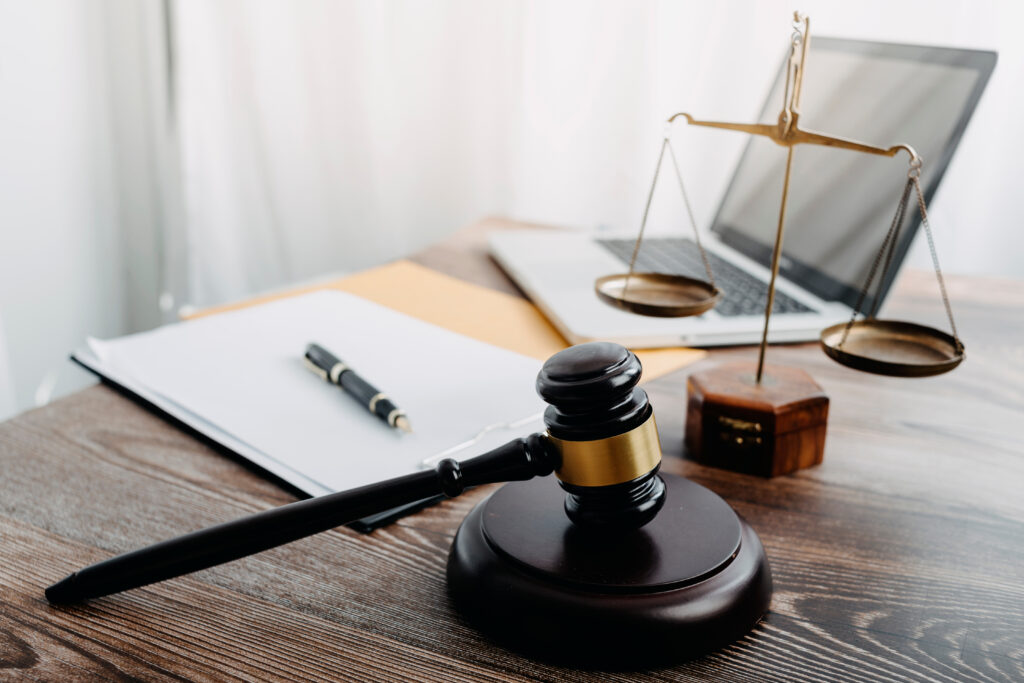Going to the gym is supposed to make you stronger, healthier, fitter. The last thing anyone expects is to leave with a life-altering injury. Yet, thousands of people get hurt using exercise equipment every year, sometimes severely. When faulty equipment is the culprit behind a catastrophic injury like one to the spinal cord, the aftermath is devastating. If this has happened to you or someone you care about, you’re likely wondering about your options.
The short answer is: Yes, you might have grounds to sue if faulty gym equipment caused your spinal cord injury in Alberta. However, it’s not automatic. Establishing liability involves showing that someone’s negligence led to your injury.
Alberta spinal cord injury lawyers can help you determine if you have a valid claim, gather evidence, and fight for the compensation you deserve.
If you’re reeling from a spinal cord injury caused by gym equipment, figuring out the legal side is probably the last thing you feel equipped to handle right now. Give MNH Injury Lawyers a call at (888) 664-5298. We can talk through your situation.
GET YOUR FREE CONSULTATION NOW!
How Things Go Wrong

You walk into a gym expecting sweat, maybe some sore muscles, but not a disaster. Gyms are full of heavy, complex machinery. When that machinery isn’t designed correctly, manufactured properly, inspected regularly, maintained diligently, or used with proper instruction and warnings, it can fail. And failure involving weights, moving parts, or structural integrity can have dire consequences, including severe spinal cord injuries (SCIs).
Think about the ways things can go wrong:
- Manufacturing Defects: The machine was flawed from the start due to errors in its creation.
- Design Defects: The machine’s very design makes it inherently unsafe for its intended use.
- Maintenance Failures: Cables fray, bolts loosen, safety stops malfunction because the gym didn’t keep up with necessary maintenance and inspections.
- Improper Setup or Instruction: The equipment wasn’t assembled correctly, or staff failed to provide adequate instructions or warnings about its safe use.
Any of these issues can turn a piece of fitness equipment into a hazard, capable of causing injuries that change lives forever.
Faulty Equipment and the Question of Negligence in Alberta
Just because an injury happened doesn’t automatically mean you can successfully sue. In Alberta, like elsewhere in Canada, personal injury claims generally hinge on proving negligence. This isn’t about malicious intent; it’s about failing to meet a reasonable standard of care, which then causes harm.
To make a successful negligence claim, you typically need to establish four things:
- Duty of Care: Did the party you’re considering suing (like the gym or manufacturer) owe you a legal duty to be careful? Generally, businesses like gyms owe a duty to their patrons to ensure a reasonably safe environment. This duty is outlined in Alberta’s Occupiers’ Liability Act. Similarly, manufacturers have a duty to produce products that are safe for their intended use.
- Breach of the Standard of Care: Did that party fail to meet the expected standard of care? A reasonable gym, for instance, would have regular inspection and maintenance protocols for its equipment. A reasonable manufacturer wouldn’t release a machine with known dangerous flaws. Failing to perform proper maintenance, ignoring known defects, or selling a dangerously designed machine could constitute a breach.
- Causation: Did the breach of duty directly cause your spinal cord injury? You need to show the link between the faulty equipment (the result of the negligence) and the injury you sustained. If the cable snapped because it was old and uninspected, causing weights to fall and injure your spine, causation is likely present.
- Damages: Did you suffer actual harm? A spinal cord injury unquestionably qualifies as significant harm, leading to physical, emotional, and financial damages.
Who Could Be on the Hook? Identifying Potential Defendants
If negligence involving faulty gym equipment caused your spinal cord injury, several parties might bear legal responsibility. Identifying the right defendant(s) is a key step.
Potential parties include:
- The Gym Owner/Operator: They have a responsibility under Alberta’s Occupiers’ Liability Act to maintain reasonably safe premises. This includes ensuring equipment is regularly inspected, maintained, and repaired or removed if unsafe. If they failed in this duty (e.g., knew a machine was dodgy but didn’t fix it or warn users), they could be liable.
- The Equipment Manufacturer: If the injury resulted from a flaw in the equipment’s design or manufacturing process (product liability), the company that made the machine could be responsible. Proving a defect existed when the product left the manufacturer is required here.
- The Equipment Distributor/Supplier: Sometimes, the company that sold the equipment to the gym might be liable, particularly if they knew or should have known about a defect.
- A Maintenance Company: If the gym outsourced its equipment maintenance to a third-party company, and that company was negligent in its duties, leading to the failure and your injury, they could be held liable.
- A Personal Trainer (and potentially the gym via vicarious liability): If a trainer employed by the gym provided negligent instruction or supervision related to the faulty equipment, contributing to the injury, both the trainer and the gym (as the employer) might be liable.
It’s possible for more than one party to share responsibility for the incident.
“But I Signed a Waiver!” – Are Gym Waivers Ironclad in Alberta?
This is a big worry for many people injured at gyms. You almost certainly signed a membership agreement that included a waiver or release of liability. Does this mean you’ve given up your right to sue, no matter what? Not necessarily.
Liability waivers are common, but they aren’t always bulletproof shields for businesses in Alberta. Courts examine them closely. For a waiver to be enforceable, several conditions generally need to be met:
- Clarity: The language must be clear and unambiguous. It needs to plainly state that you are giving up your right to sue, even for negligence. Vague language might not hold up.
- Scope: Does the waiver specifically cover the type of situation that caused your injury? For example, does it explicitly mention injuries arising from equipment failure due to the gym’s negligence? Waivers might cover inherent risks of exercise but may not cover negligence in maintaining equipment.
- Notice: Did the gym take reasonable steps to bring the waiver clause to your attention before you signed? Burying it in tiny print within a lengthy document might not be considered sufficient notice.
- Gross Negligence: Waivers typically do not protect a party from liability for gross negligence – conduct that shows a reckless disregard for safety, far beyond simple carelessness.
Signing a waiver complicates things, but it doesn’t automatically close the door on a claim, especially for serious injuries caused by clear negligence related to equipment safety. A lawyer can review the specific waiver you signed and the circumstances of your injury to advise on its potential enforceability.
Proving Your Case: Gathering the Goods
Building a strong case involves gathering various pieces of information:
- Incident Report: The report filed with the gym immediately after the accident (if one was made).
- Witness Information: Names and contact details of anyone who saw the accident happen or who might know about the equipment’s condition.
- Photos/Videos: Pictures or videos of the faulty equipment, the specific defect (if visible), and the surrounding area.
- Equipment Details: The make, model, and serial number of the machine involved.
- Maintenance Records: The gym’s logs detailing inspection, maintenance, and repair history for that specific piece of equipment (obtaining these often requires legal intervention).
- Medical Records: All documentation related to your diagnosis, treatment, prognosis, and the impact of the spinal cord injury on your life. This forms the basis for your damages claim.
- Expert Reports: Depending on the case, reports from engineers (to analyze the equipment failure) or medical professionals (to detail the long-term consequences of your SCI) might be necessary.
Document everything related to the incident and your recovery. Keep records of communications, expenses, and how the injury impacts your daily activities.
Compensation for Spinal Cord Injuries in Alberta: Beyond Medical Bills
A spinal cord injury is catastrophic, impacting every aspect of your life. While Alberta Health Services covers essential medical treatments, the financial consequences extend far beyond hospital bills. A successful personal injury claim aims to recover compensation (damages) for the full spectrum of losses you’ve suffered due to the negligence.
Here are the main types of damages typically pursued in a serious injury case like an SCI caused by faulty gym equipment:
- General Damages (Pain and Suffering): This is compensation for the non-financial losses: the physical pain, emotional suffering, loss of enjoyment of life, reduced mobility, and the overall impact on your well-being. Spinal cord injuries are among the most severe injuries possible, and general damages reflect this immense hardship. Importantly, SCIs are not considered “minor injuries” under Alberta’s Minor Injury Regulation (MIR). The MIR cap on general damages (currently just over $6,000 for minor sprains/strains, mainly in MVA contexts but check current limits) does not apply to spinal cord injuries. Compensation for pain and suffering in SCI cases is determined based on the severity and long-term impact, often resulting in significant awards based on case law precedents.
- Loss of Income and Earning Capacity: This covers wages you’ve already lost because you couldn’t work, as well as the income you’re projected to lose in the future due to the injury’s impact on your ability to earn a living. Calculating future loss often involves economists and vocational experts.
- Cost of Future Care: This is a critical component for SCIs. It covers the anticipated lifetime costs for things not fully covered by provincial health insurance, such as:
- Home modifications (ramps, accessible bathrooms)
- Specialized wheelchairs and other mobility devices
- Ongoing physiotherapy, occupational therapy, psychological support
- Attendant care or specialized nursing care
- Adaptive equipment for daily living
- Medications and medical supplies
- Special Damages: Reimbursement for specific out-of-pocket expenses you’ve already incurred due to the injury, like prescription costs, travel for treatment, or assistive devices purchased.
Why Legal Guidance Matters

Trying to handle a complex spinal cord injury claim on your own, especially while dealing with the injury itself, is incredibly challenging. You’re up against gym owners, potentially large equipment manufacturers, and their insurance companies and legal teams. They handle these situations routinely.
Here’s why getting legal advice is beneficial:
- Investigating Negligence: Lawyers know how to investigate the accident, gather necessary evidence (including forcing disclosure of maintenance logs through legal processes), and determine if negligence occurred.
- Dealing with Waivers: They can analyze the waiver you signed and advise on its enforceability under Alberta law.
- Identifying Defendants: They can identify all potentially liable parties to maximize your chances of fair compensation.
- Valuing Your Claim: Accurately calculating the full extent of your damages, especially future care costs and loss of earning capacity for an SCI, requires experience and often input from medical and financial experts. Lawyers coordinate this.
- Negotiation and Litigation: They handle communications and negotiations with insurance adjusters and opposing lawyers. If a fair settlement isn’t reached, they represent you in court.
A lawyer experienced in Alberta personal injury law advocates for your interests throughout the process.
Secure Your Rights After a Gym Equipment Injury
Don’t assume you have no options just because you signed a form or because the situation seems complicated. Alberta personal injury lawyers understand how to navigate these challenges and can help clarify your rights.
Contact MNH Injury Lawyers today at (888) 664-5298 for a confidential discussion about your case. Let us help you move forward.
